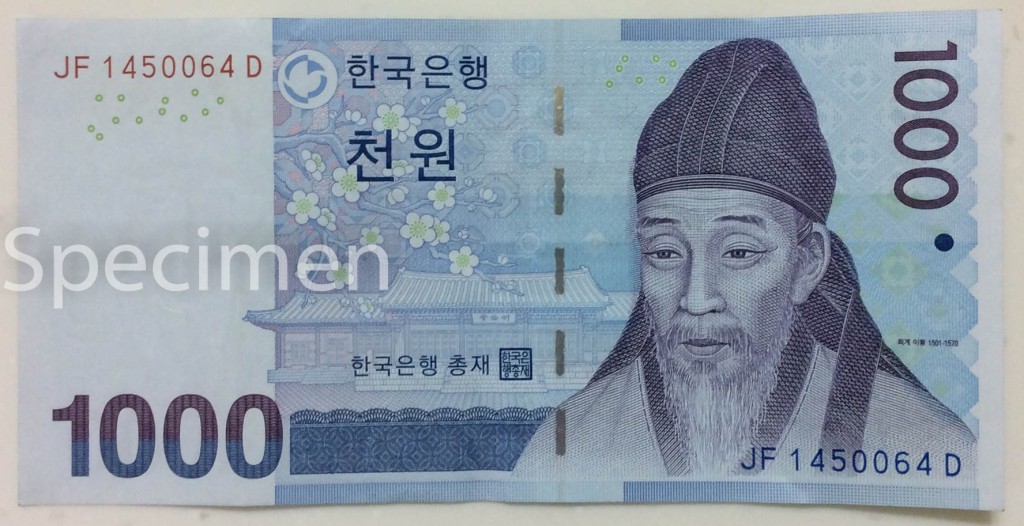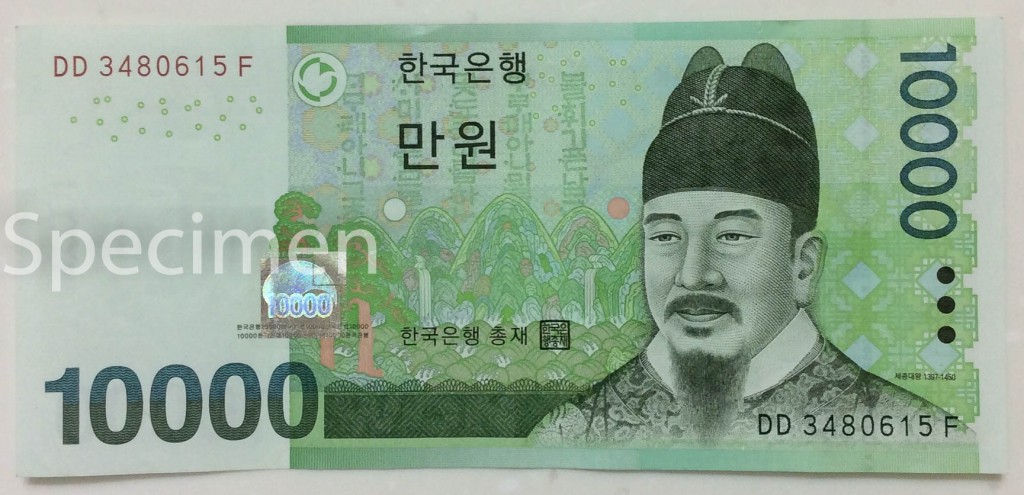Diary: Saturday 26 March in SEOUL
The posts for the next month will focus on our Spring trip to South Korea.

First, let us get to grips with the currency.
We are talking millions here.
After reclaiming our luggage in Incheon Airport, I head to the conveniently located currency exchange booth just before the exit into the main airport area.
One thousand US Dollars gets me well over a million won (원). On our initial trip to South Korea two years ago, it was difficult to work out how many zeroes I had to look out for before committing to buying anything. Now I drop the zeroes and think 1,000 won is roughly 1 US dollar or 60 pence UK money.
Koreans are very fond of their national heroes. Here then are the reasons why the following people are featured on the banknotes.
We start with the 1,000 won (천 원) blue note and here we have Yi Hwang (이황) who lived from 1501 to 1570. He is one of the two most prominent Korean Confucian scholars of the Joseon Dynasty.

So who is the other most prominent scholar? This is Yi I (이이) who lived from 1536 to 1584 and who is featured on the 5,000 won (오천원) orange note.

My absolute hero is King Sejong the Great, the fourth King of the Joseon Dynasty. Born on May 15 1397, King Sejong spent a large part of his later life creating the Korean script, Hangul.
One of the beauties of Hangul is that not only are the characters very easy to learn, but phonetically it is designed in a way to capture spoken words and turn them into written script. Therefore if there is, say, a community whose language is spoken but for which there is no alphabet, Hangul can accommodate those oral words and preserve them linguistically.
King Sejong is honoured on the 10,000 won (만원) green note. His grand statue also presides over Sejong Daero in Seoul, which is the long road leading south of Gwanghwamun. He died very young, aged 52, on 08 April 1450.

I have to say that I am always very happy to return to Seoul as my accommodation is based around the Gwanghwamun area and therefore I get to see King Sejong each time I am visiting.
Last but not least, we have Shin Saimdang (신사임당) on the 50,000 won (오만원) yellow note. She was Yi I’s mother and is held up as a model of Confucian ideals. She is respected enough to be fondly referred to as Eojin Eomoni (어진 어머니) or Wise Mother. Well…I am happy to be called that anyday but perhaps I should aim to inculcate some deep Confucian values in the children first!

Our first day in Seoul started in a dramatic way, even before lunchtime. Before leaving London I was already feeling unwell, with a headache on Thursday. How bad was it? Bad enough to give half my lunch away. This was not something to be taken lightly as I was actually having lunch at Alain Ducasse at The Dorchester, to celebrate HK Sister’s birthday. She had flown in just that morning.


By Friday morning I knew I was coming down with something as my throat was really sore. As soon I arrived in Seoul I asked our Korean friend SS to pick up some extra strong tablets for sore throats from the pharmacy.
One thing you should know about Korean society is that they take illness seriously. Doctors take patients seriously. So instead of some over the counter throat medicine I was whisked from the airport to the doctor’s clinic.
The diagnosis was B-Type Influenza and I was sent home with some delightfully packaged pills.

Despite feeling unwell I still managed to eat a Korean lunch and dinner. Generally I work on the basis that eating rice will always make you feel much better. It was only 48 hours later when I couldn’t eat that I realised how bad my health situation was getting.
Since I am hardly ever ill I spent the whole of Sunday out exploring Seoul. It wasn’t very clever but it did provide lots to write about in the next post.